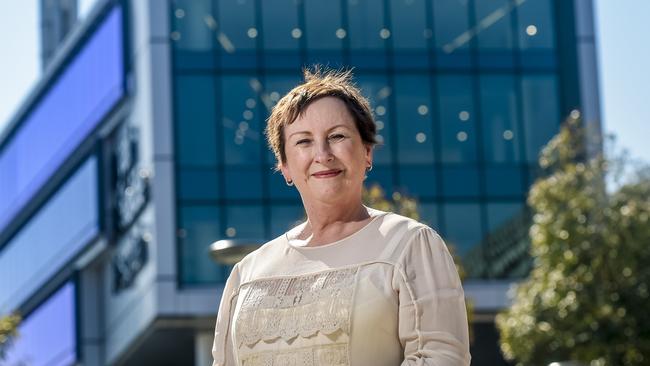Royal Adelaide hospital: beds to be on standby in summer by health authorities
Dozens of hospital beds will be mothballed and staff encouraged to take annual leave under staff roster changes authorities say will help them deal with “surges” in demand.
SA News
Don't miss out on the headlines from SA News. Followed categories will be added to My News.
- How to get the most from your Advertiser digital subscription
- Moves to free up beds, ease ramping at RAH
UP to 60 beds across the Central Adelaide Local Health Network including 32 at the Royal Adelaide Hospital will be put on standby as winter demand eases, sparking an immediate storm of criticism from unions and medical associations.
Staff are being encouraged to take annual leave over the forecast quieter period and, in a separate development, voluntary separation packages now are being offered in the Health Department and northern hospitals.
At the RAH, 32 beds will be mothballed in four wards while 16 in four wards will revert to standby for summer at the 297-bed QEH.
The 800-bed RAH now has 625 commissioned beds operating — five of these were unused as of Friday with more expected to be unused over the weekend.
The standby beds will be not be removed and will be available for “immediate” activation if needed in a surge of demand, CALHN chief executive Lesley Dwyer said, using casual, part-time and rostered staff.
She said it was normal practice for hospitals worldwide to run at below 100 per cent capacity to be ready for unexpected surges and that careful planning would predict beds needed over summer.
The move comes amid record ambulance ramping and chronically clogged EDs.
However, Ms Dwyer predicted this would ease over summer and noted a wide range of recent initiatives were freeing up beds, speeding up discharges and diverting non-urgent cases away from EDs to more appropriate community and home care.
“We want to be better at planning, less reactive,” Ms Dwyer said.

She also predicted better patient flow and less ED Code Whites — which indicates full capacity — over summer, despite there being fewer beds open.
CALHN will work closely with the SA Ambulance Service to assess day-to-day demand for beds.
Ms Dwyer flatly rejected the move was a cost-cutting exercise or that it was driven by CALHN administrators KordaMentha.
The RAH has operated at 100 per cent capacity or more on 257 days since it opened two years ago, reaching a peak of 108 per cent on September 24, 2018 and on most days has operated at 98 per cent capacity.
Ms Dwyer stressed the need for the hospital to have “agile” capacity to deal with surges.
“We would be much more efficient at a low 90 per cent capacity — I’d hope to get it to 92 per cent but can live with 94 per cent,” she said.
“In hospitals everywhere there needs to be capacity to allow the system to go up and down and keep pace with predicted seasonal demand, short-term activity surges and population growth.
“Particularly for the Royal Adelaide Hospital, we need to re-establish a standby bed approach that has never been fully implemented since the new hospital opened. As a major referral hospital, it is critical that we adopt this approach.
“I’m confident we are now in a position to get this organisation back to having some capacity to deal with surges in demand. — if we are at 100 per cent we are scrambling to find the right places for people.”
Ms Dwyer noted during high demand patients have been put in overflow beds in areas such as radiology for the night.
The move to put beds into standby mode, including eight at Hampstead and four at St Margarets, will be phased in between now and December.
The move brought immediate criticism, with opposition health spokesman Chris Picton saying it would only exacerbate current problems.
“The closure of 60 beds at major hospitals will only worsen the ramping and overcrowding crisis hitting hospitals,” Mr Picton said.
“This will pour petrol on the fire of the hospital ramping crisis that thousands of patients have been impacted by this year.”
College for Emergency Medicine president Dr Simon Judkins tweeted: “Just looking for a brick wall to bang my head against — this is just mind-boggling, (the) SA public need to express their dismay, this will impact your health outcomes. Reducing capacity will increase mortality, no doubt.”
Ambulance Employees Association state secretary Phil Palmer said: “It is a disaster in the making — yet another example of the government caring more about cost than care.”
The RAH had 64 people being treated in its 77-capacity ED as Ms Dwyer held a press conference on Friday morning announcing the move, while the QEH had 24 patients in its 31-capacity ED.
Australian Nursing and Midwifery Federation state secretary Elizabeth Dabars called the decision “unfathomable” and predicted it would escalate pressure on EDs.
“Every day, we are hearing about patient flow issues creating havoc and here we have 16 beds being closed at the RAH — we have to wonder whether the Minister is more interested in the safety of our community or saving money,” Ms Dabars said.

